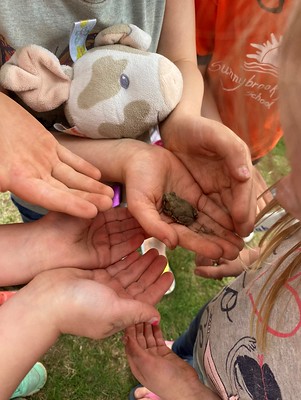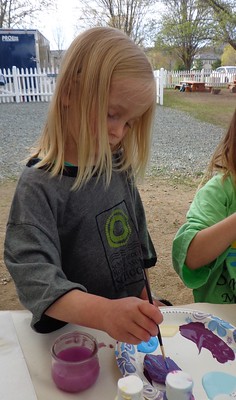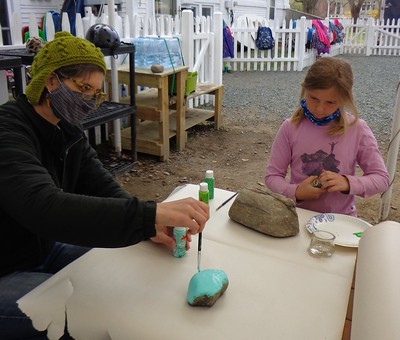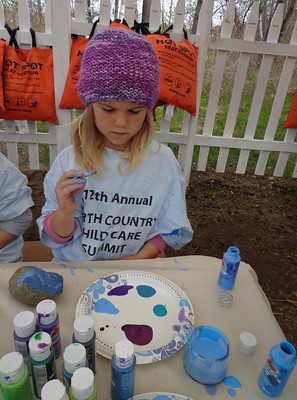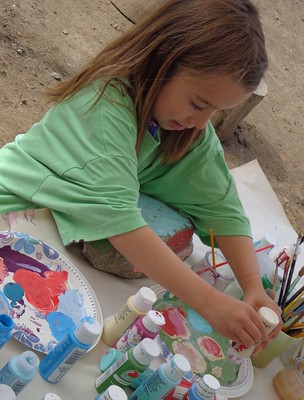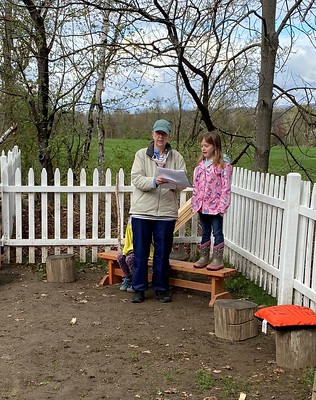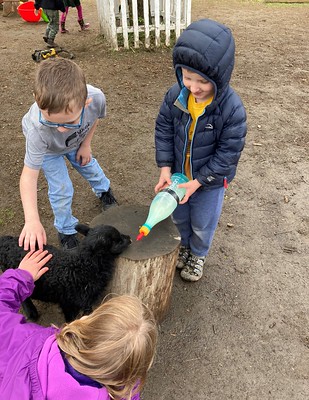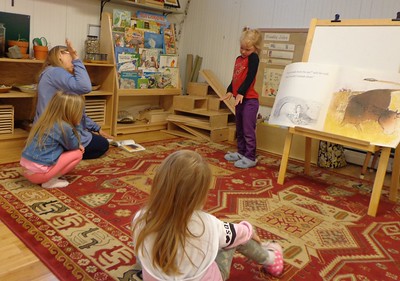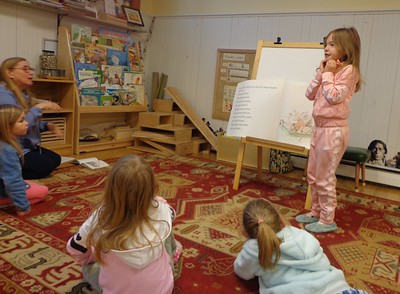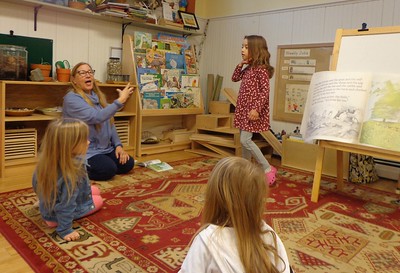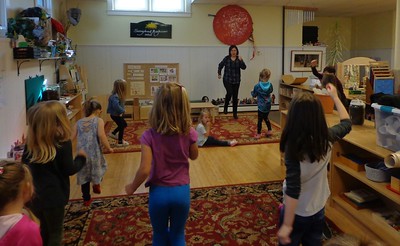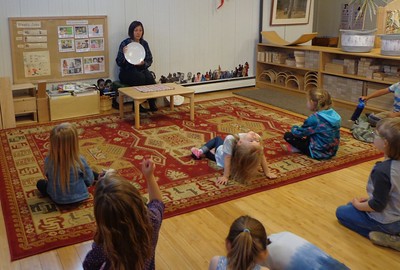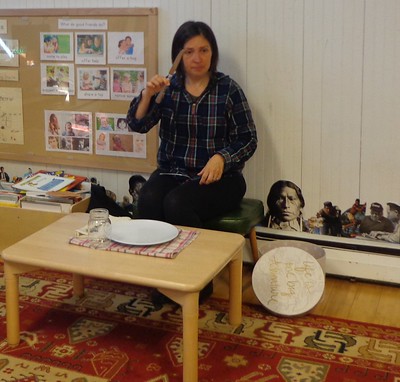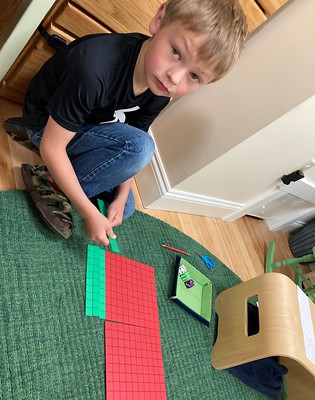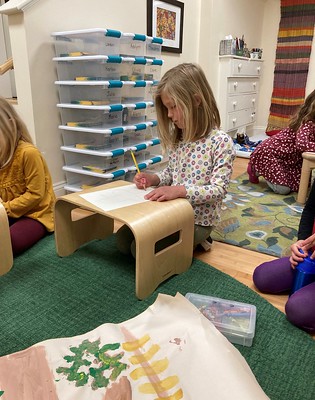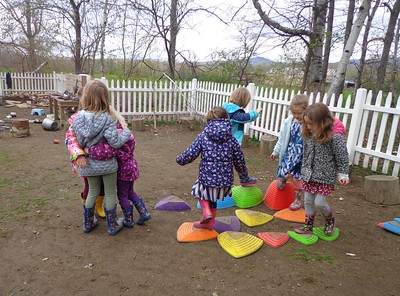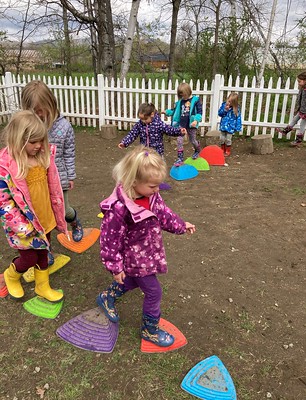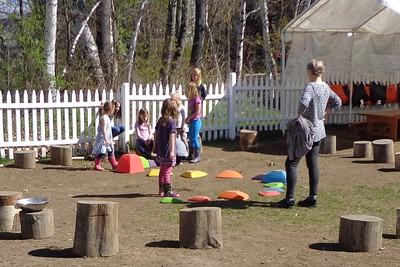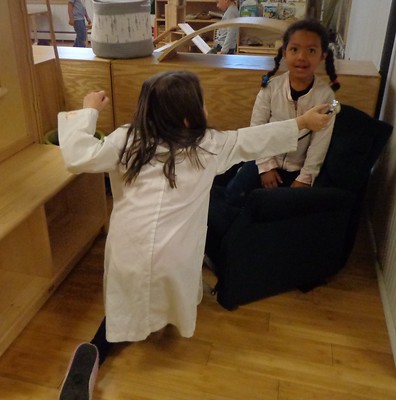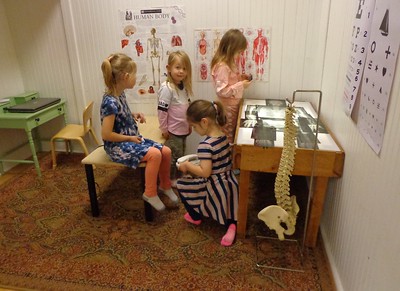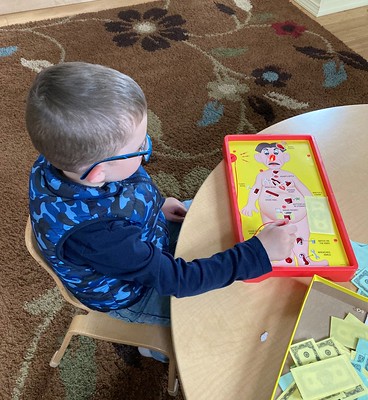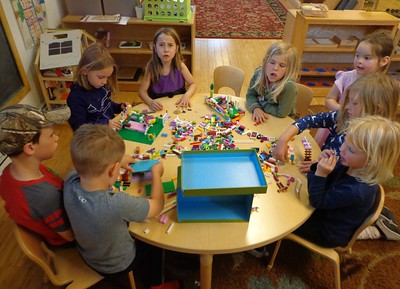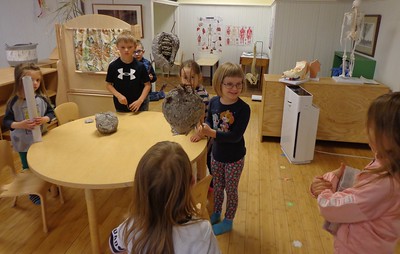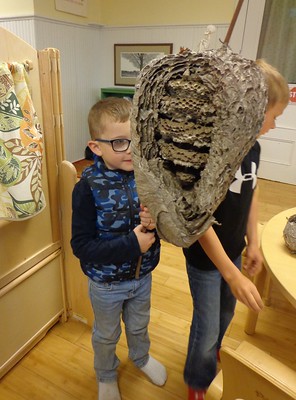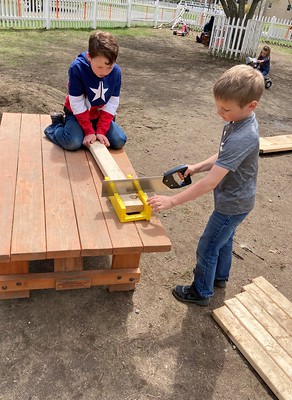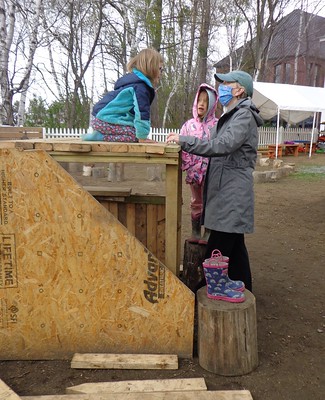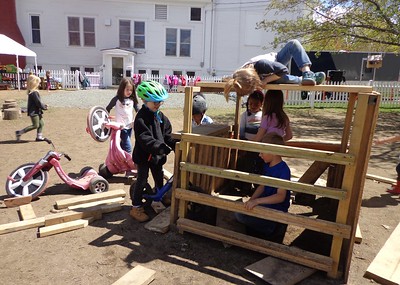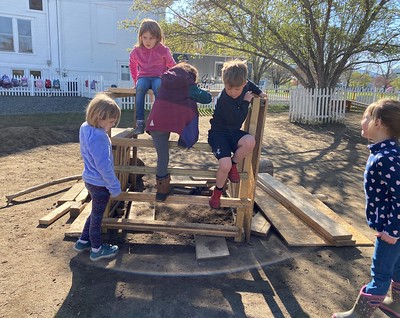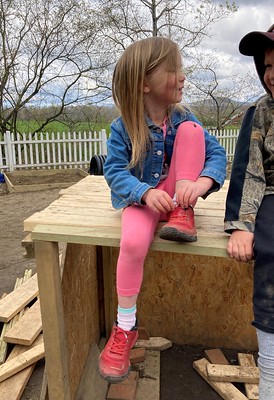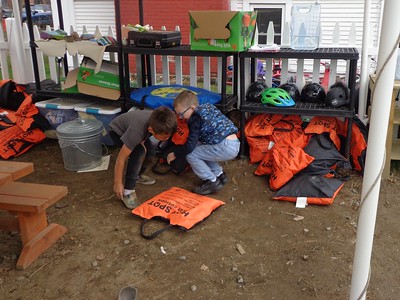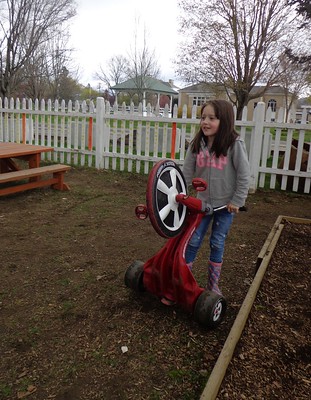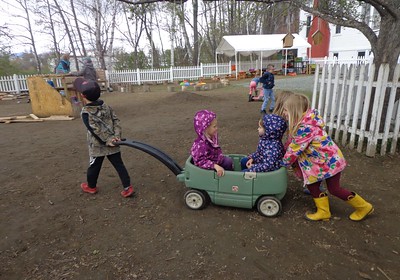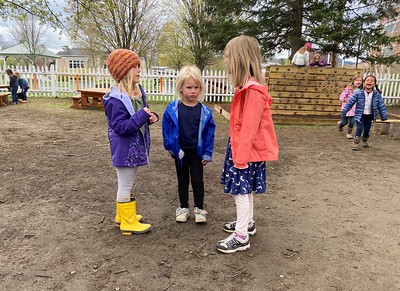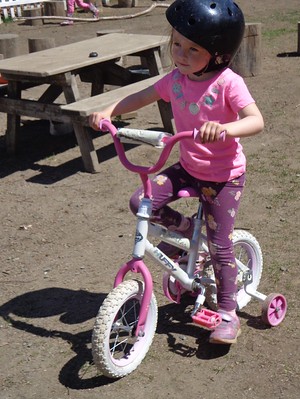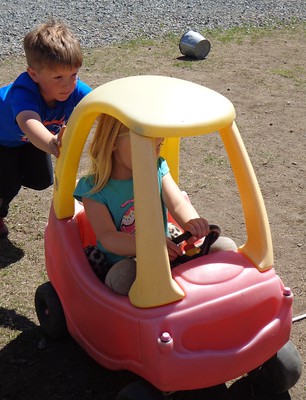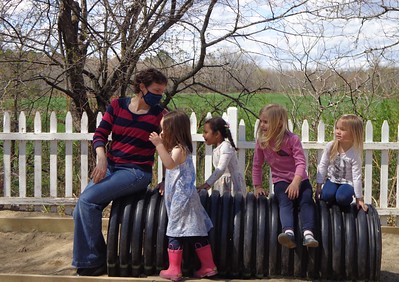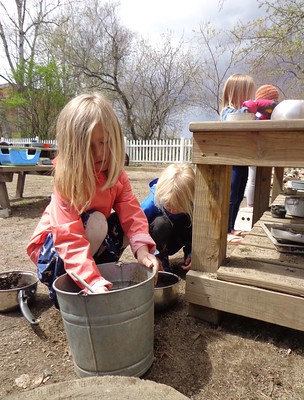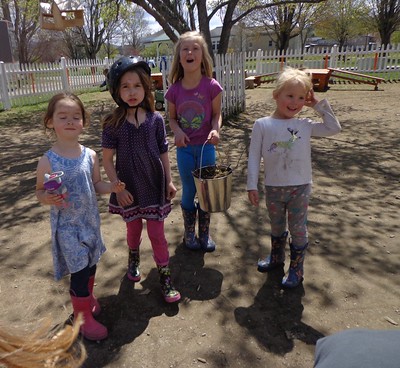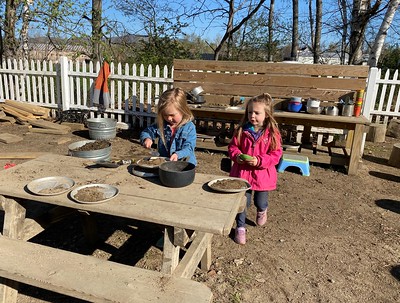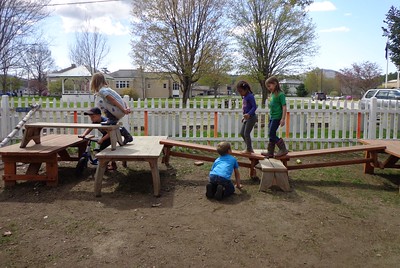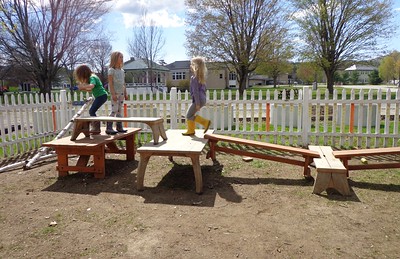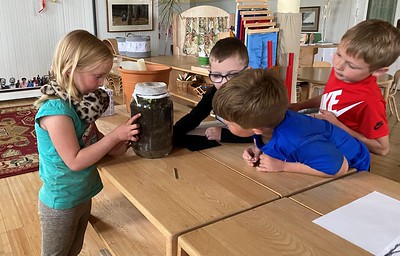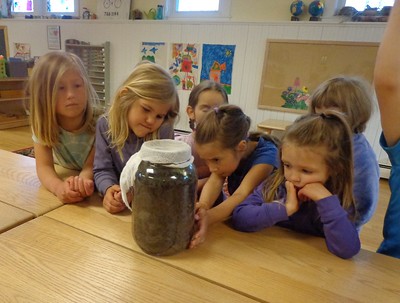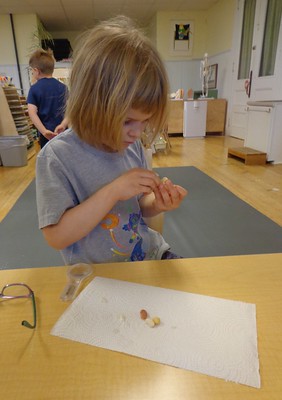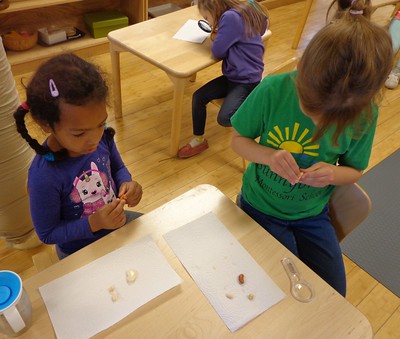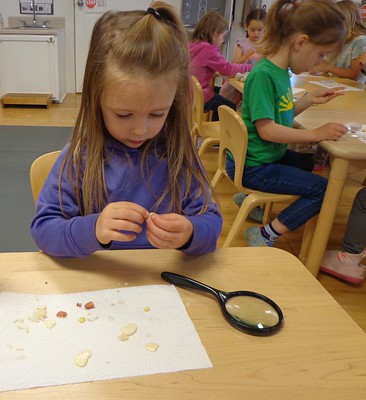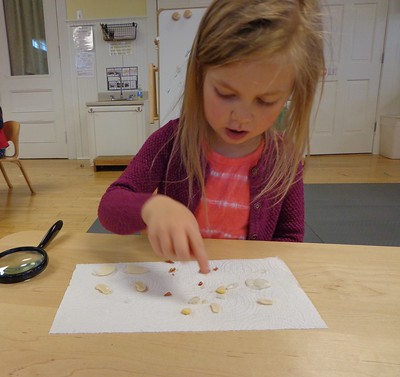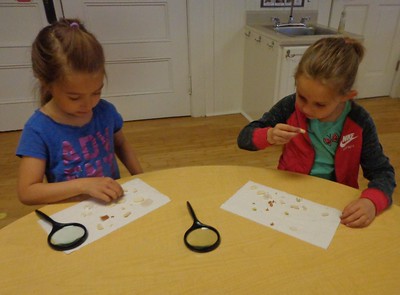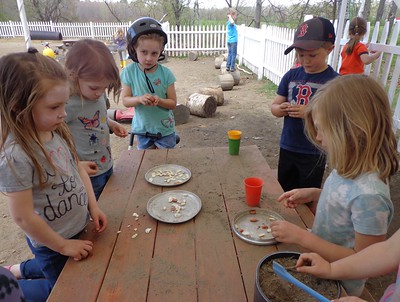Stacey and Lil Zemla came in to do an art project with us Monday. They read the story Petra, about a rock who has been sitting for thousands of years and eventually is picked up by a child and painted to look like an elephant. The children picked rocks from our rock pile then washed and painted them with acrylic paint.
We continued to practice Woodland Stone Soup. We hope to have a dress rehearsal soon!
We had three lambs visit with the Morrison family on Tuesday. The children loved watching (and chasing) them as they ran all around the playground. One lamb was very tame, and some of the children had the opportunity to bottle feed it. The other two were not as tame, and the children really wanted to chase and catch them. When it was time to go we sat on the stumps and watched the sheepdog follow the commands to help herd them.
During sign language Rose talked about rules, where we might have rules, why we have rules, and what the rules are at school, just like the rules Mr. Gumpy had for the children and animals before going for a boat ride. The children shared some of the school rules and Rose showed us how to sign them. The children then took turns signing the story of Mr. Gumpy’s Outing, imitating Rose as she read and signed. We then sang and signed the song BINGO.
During Spanish with Zeanny we practiced counting, she tried to trick us with the song Cabeza, Hombros, Piernes, Pies (Head, Shoulder, Legs, and Toes), and then we did some silly dancing with La Marcha. Zeanny then introduced how to set a mesa (table). She introduced all the items needed and how to place everything. This work will be left out in the classroom for the children to practice.
Kindergarten students did some hundreds, tens, and ones place number building work. They rolled three dice, and decided which number would represent each place, then wrote and built that number. They continued working on their understory. They each chose an animal that lives in the understory to draw, color, and cut out. They considered the size of the animal they chose to draw then compared the size to the other animals and selected an appropriately sized paper, from small to large. They practiced the alphabet by building and walking letters using the stepping stones in the yard.
The Physician’s office continued to be busy.
We did a little house renovating. The children love to climb up and sit on the roof, so we took off the back panel and added a ladder. We also began construction on the second house. Thank you to the Sansoucy family for the new saw and mitre box, screws, and square! They have been very helpful!
Students checked out the worm house throughout the week and observed the tunnels they created and how they mixed the sand and soil together.
This week for Friday science Michelle introduced the parts of a seed and the life cycle of a plant. She showed us a video about how seeds become plants, then she gave each student four different types of bean/pea seeds that had been soaked, and a magnifying glass to examine them. The children carefully peeled off the seed coat, located the embryo, which would become the root, and identified the endosperm, which is the biggest part of the seed and will feed the plant until it has sent a shoot up through the soil and formed leaves that will begin using sunlight, air, and water to make its’ own food.

